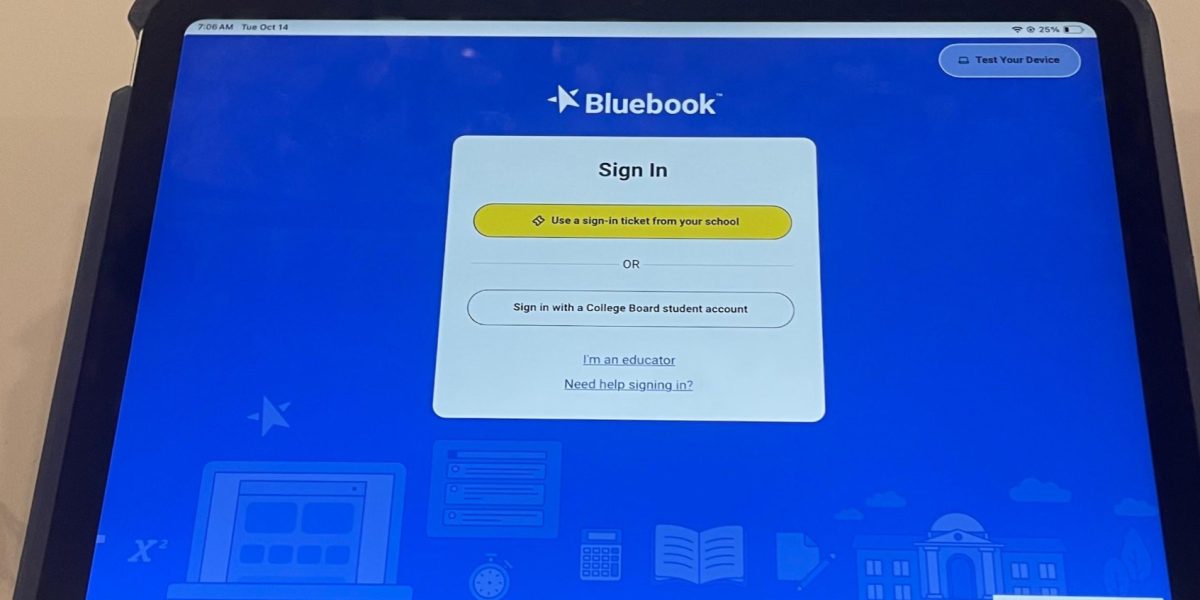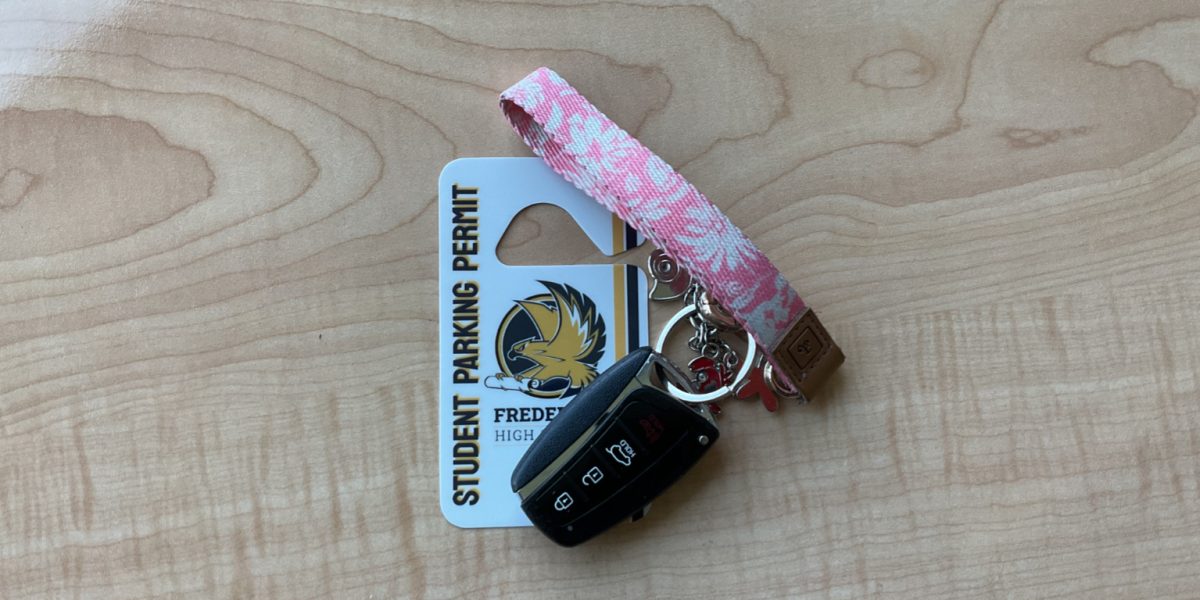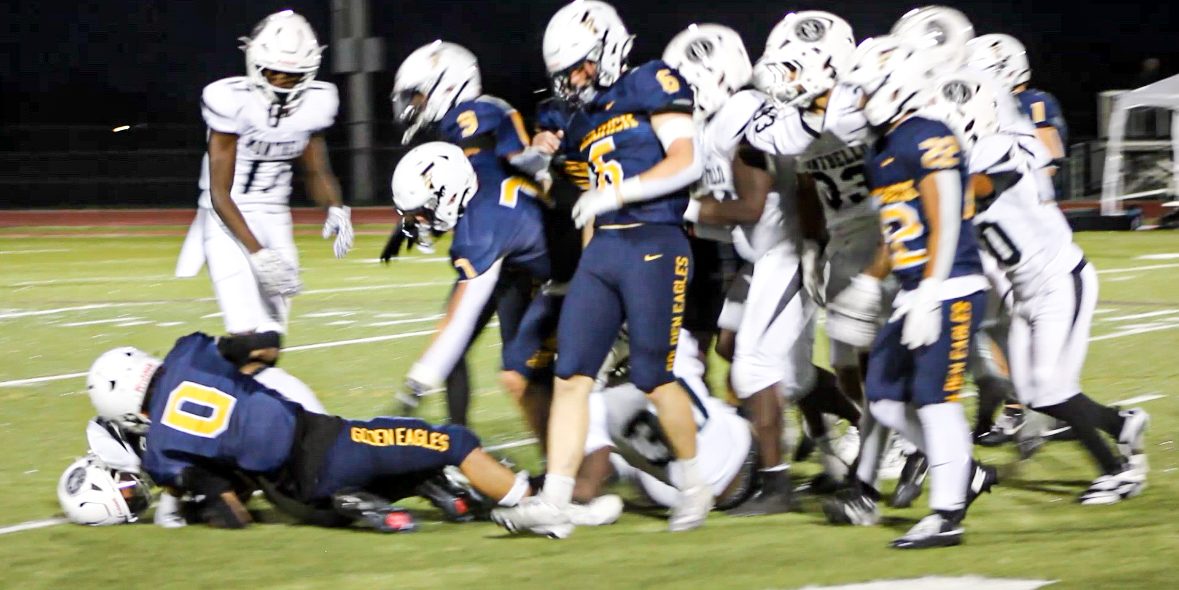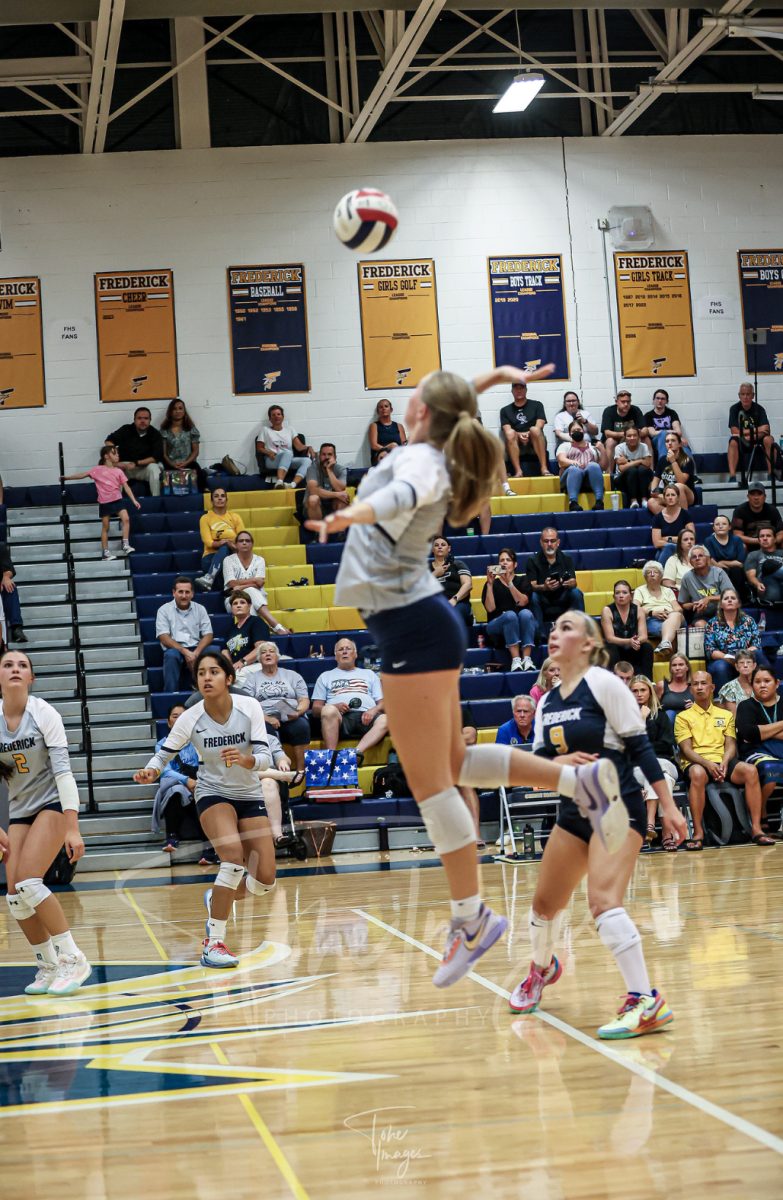It’s Time to Cut Class to Help Students
COVID has proven we need to spend less time at school and more time pursuing our passions
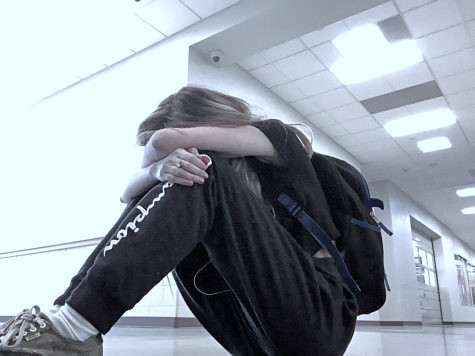
A student shutting down in the halls due to their mental health plummeting. While there are several ways we can help teens with their mental health, the easiest and most impactful thing the school can do is to cut down the length of each school day.
February 26, 2022
It’s an inarguable fact that school impacts a student’s mental health tremendously. It’s only natural: school dominates a student’s life. In order to keep a “full schedule,” a student will be at Frederick High from 7:45 to 2:45 (with the possible exception of 3o minutes for an off-campus lunch). That’s seven hours, over a quarter of the day. But that’s not all. If a student is involved in an extracurricular like sports or theatre (or goes to the games, like we are encouraged to do), that’s another two or three hours most nights. Then add on homework: if our teachers followed the recommendations from the National Education Association, that’s another 90 minutes to two hours where, okay, we’re not at school, but school is still dominating our lives. Let’s also not forget that many teachers do not follow those guidelines and the homework expectation is often greater for sophomores, juniors, and those taking AP classes.
What’s this all add up to? For a junior that has a full schedule, plays junior varsity, and actually does homework each night instead of waiting until the last minute, that’s 12 hours devoted to school.
Half the day.
Something is wrong here, and it needs to change.
The True Cost of the Seven-Hour School Day
School-related issues are often the number one stressor for teenagers, even above family, money, and relationships. A survey done in 2013 by American Psychological Association had found out that half of all the teens said they were stressed by school pressure. According to KVC Kansas, a Kansas nonprofit focused on improving community health, “Research shows that academic stress leads to decreased well-being and an increased likelihood of developing anxiety or depression. Additionally, students who have academic stress tend to do poorly in school.” More than 1 in 3 students experienced persistent feelings of sadness or hopelessness, which has only increased throughout the years by 40% from 2009 to 2019.
This leads to a lot more than just “a little stress.” Everyone handles emotions completely differently, and the way some teens handle the pressure has grave consequences. KVC’s research shows that 1 in 6 students have openly admitted to making a suicide plan within the last year. I spoke with one student from Frederick High School who would like to remain anonymous; they stated, “I have felt suicidal within this year. It’s all too much. We have no free time and we sit there way too long in those classes. It’s a waste of time, so like, why go through more of it?”
Granted, students have more pressures than just school, like jobs and family obligations. Yet the fact remains that school pressure is what hits teens the hardest. While there can be many culprits as to why–high stakes testing, poor school culture, issues with socialization–I believe the main issue is how much time school takes from our lives. Those 12 hours.
Let’s say a teen sleeps for the recommended eight to ten hours a day. If they are very involved with school and it takes up those 12 hours, they only have two to four hours for everything else in their lives. That includes taking care of their mental self by cleaning their room, showering, taking care of their pets or family, feeding themselves, spending time with friends, doing household chores, and relaxing in order to process their day.
Does that seem like it can happen in two to four hours? Of course not, which is why the CDC estimates that 7 out of 10 teenagers don’t get enough sleep, which affects their health, mood, and ability to handle stress. While mindfulness and gratitude journals and all the other things we’re told about in Advisory can help, but not as much as giving students more time for themselves. After all, a teen goes through a lot of emotional and intellectual changes during high school, but they often have little time to consider these changes, leading to more stress.
Simply put, we teens don’t need more praise or more counseling check-ins or more spirit days. We need more time for ourselves.
From Seven to Four
So what can we cut from the 12 hours? We could cut homework, but for reasons I’ll get into later, that’s actually not the most effective thing we could do. As for cutting the hours spent on extracurriculars… well, you tell the basketball team that they only have their team for an hour each day. The only thing that can and should be cut is the school day itself.
Let’s think about what school’s about: our education. What really matters is that we are developing our minds and social and emotional skills. Now let’s consider what actually happens at school. When we’re in class, we spend part of our time learning from a teacher but a lot of our time working on our own. That might be good for our minds but not for our maturity. We’re often told not to talk in class or get off-task, and even when we get to collaborate with others, we seldom get to choose our partners and don’t really have time to get to know who we’re working with.
So when do we get to develop our personal relationships and emotional skills? Lunch. Extracurriculars. Going to games and dances. Not classes. For a lot of students, this is more important to them than academics because so little time is dedicated to it. Is it any wonder that students frequently ditch classes to wander around the halls with their friends?
Beyond this, being at school can also make a student stressed because it brings students into an environment where bullying, social anxiety, loneliness, excessive work, and of course the pressure of others around them. If going online during COVID taught is one thing, it’s that some students do better academically when not at school. We have a lot of students who have switched to online school or only come to school part-time because of these things.
So we could fix this by shortening the school day, giving students more time to themselves and homework. If everyone agreed to have hour-long classes instead of ninety-minute classes. The school day would end at 12:45 rather than 2:45, or would start at 9:45 so we all get to sleep in later. Four classes, four hours (plus or minus passing periods). This has a lot of advantages. Class time is reduced to just what’s important and students get three hours of their life back. The school would also save money by not needing lunch and no students would have to break all speeding laws in order to get lunch in 30 minutes. This would also give teachers (who would still show up for all seven hours) time to grade our assignments and help us.
Would this work?
Now some students really like being at school and wouldn’t want the day shorter–because of family or other reasons, school is a safe place for them. These students could still stay the whole time because teachers are still there, but the rest of us can leave and do other things. Others may say that seven hours at school would be fine if we could get rid of homework, but that’s not really realistic. Lots of students work better at home in their element than in a classroom with lots of distractions–for these students, class is a waste of time and boring because they can’t work at school and they’ll have homework no matter what. More teachers are also moving toward project learning, which is easier to do in large chunks than broken up over a bunch of short class work times. Again, if this doesn’t work for students (or if students are failing a class), they can stay at school for the entire time.
An argument against this plan is that lots of students take off-blocks or have study hall, which gives them more time back each week. However, this isn’t an option for all students, and students roaming the school during off-blocks or sitting in a silent study hall doesn’t make for a productive time for students. If we have a four-period four-hour school day, we could eliminate all off-blocks and study hall classes, as they wouldn’t be necessary. This would actually mean students would need a full schedule and actually end up learning more.
But would we really learn enough with just four hours a day? Definitely. We’ve had several 62-minute classes lately because of delayed start and the people I spoke to learned just as much on those days but were more awake because of the extra sleep. Colleges also require students to be in classes less than high schools. According to North Central College, most college courses are defined by their credit hours. For example, if a student takes a three-credit-hour class, they should expect to spend around three hours in a classroom or online learning (either in hour-long classes three times a week or two ninety-minute classes twice a week) and three to six hours completing homework. A full-time course load is 12 credit hours – or four courses – meaning students only spend 12 hours in a classroom each week. At Frederick High School, we spend 31 hours a week in a classroom (if one takes out lunch and passing periods). If a student takes a maximum course load (six classes, 18 credit hours), they still only spend 2/3 of the time high schoolers spend in class with an average of 3.6 hours each day. While this would increase our homework load from 7.5-10 hours of homework a week to 12-18 hours each week, we would be gaining 15 hours per week, which still gives students an extra 4-8 hours a week. The larger benefit is that we can fit those hours around our family or work schedules and have the option to complete it where we feel best–at home or after school in a less-distracting environment. This alone would see a sharp drop in student stress.
COVID proved that students need more flexibility in their learning schedules and that school is not the best environment for all students. It revealed that most classes can be more condensed than they usually are and that when given more time outside of classes, teachers are better at communicating with students and keeping up with our work. Let’s take these lessons to heart and cut class lengths to benefit the health of students.












